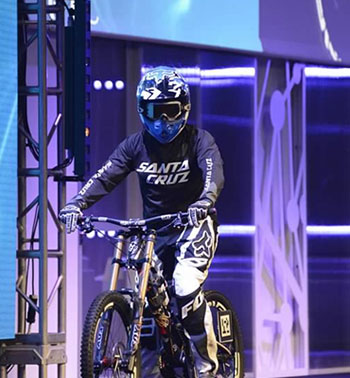Melissa DiEgidio
Driven by the Internet of Things: A mountain bike with a voice
Listening to things in the IoT will redefine manufacturing.

Image courtesy of PTC.
Previously, manufacturers relied on customer feedback to maintain and upgrade products; now, product analytics can fix issues before they happen — and create new opportunities for product design and service. This is done by listening to the “voice of the product or data,” where manufacturers can gather, interpret, and feed product data back into the design cycle, enabling a new set of capabilities that builds value for manufacturers and customers, all driven by the IoT.
Imagine listening to the “voice” of a Santa Cruz mountain bike. The bike, pictured above at the opening of the Boston-based IoT event LiveWorx, demonstrates how physical products can be dissected to their digital cores and this knowledge used to predict and resolve problems. The bike, fitted with sensors and a Raspberry Pi computer for connectivity, tracked wheel speed, suspension pressure, and angle of the steering wheel — all of which was connected to the cloud using our ThingWorx IoT platform. As it was ridden around the stage, its motions were displayed inside a computer-aided design (CAD) model. Combining the power of CAD and product lifecycle management (PLM) with our IoT platform, we merged the bike’s real-world physical interactions into the digital world, creating a “digital twin,” an exact digital representation of the physical bike. Read more…
